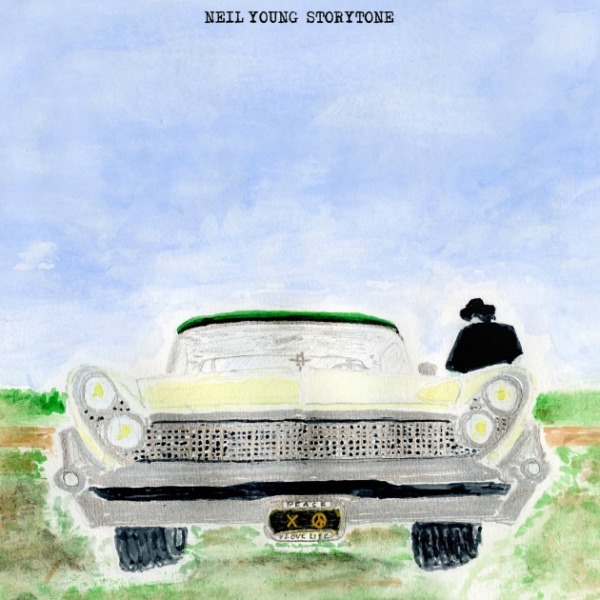Words by Russell Carstens
For his new album, Storytone, the restless Neil Young has undertaken another change in direction. His genre-hopping ways have caused fans to feel upset and betrayed over his decades-long career. I remember a conversation with a friend who expressed disdain for artists like Young and Bob Dylan releasing new albums, preferring to pretend that only their classics existed. I will never understand that mindset—I find Neil’s fearlessness in pursuing genres that interest him inspiring.
Young’s journey into the unexpected began in the early eighties, when he signed to Geffen Records. He was famously sued by the label for making music “unrepresentative” of himself, when, starting with Trans, he dove into the burgeoning electronic music scene. He followed that up with Everybody’s Rockin, a throwback to fifties rock ‘n’ roll—his answer to Geffen’s demands that he return to “rock music.” Young even stepped foot into avant-noise with 1991’s Arc, inspired by the free dissonance of bands like Sonic Youth and the Boredoms, the former whom he had recently toured with. Even in 2014 Young is sticking to his guns, having released A Letter Home, an album of covers recorded into a minuscule microphone in a microscopic-sized mobile studio: Jack White’s Voice-O-Graph gizmo. It’s tinny sound made Young appear as if he had time-traveled back to the Delta Blues era.
On Storytone, Young has embraced a grand orchestra sound. It boasts flourishing sounds that pack an emotional wallop. Although he always sang with the coarseness of a man twice his age, his voice has more wear and tear now that he’s nearing seventy. On “Who’s Gonna Stand Up?” he tackles his passion for saving the earth. Urgent, dramatic strings support the song’s message, like those featured in a nature documentary as a volcano is about to erupt. He pleads, “Protect the wild/ tomorrow’s child,” desperately urging humanity to act on earth’s behalf and say enough is enough.
On “I Want to Drive My Car,” Young lets the music do most of the talking with a distorted blues shuffle. “Say Hello to Chicago” swings and swaggers with horns and keys like an underground Prohibition-era party. The sincerity of “I’m Glad I Found You” effectively tugs at the heartstrings, where he touches on the “blessings and curses” of life. “All Those Dreams” closes the album gently with acoustic guitar and tambourine, reminiscent of the emotional landscape on his 1992 album Harvest Moon. It’s a beautiful note to end on.
Like it or not, Young’s penchant for doing as he pleases is part of what makes him interesting and respectable. It would be easy for an artist his age to ride the bandwagon of playing classic albums in full, or releasing only retrospective collections of his best work. Instead, Young’s thirst for exploration on Storytone keeps his art ever-changing and his fans on their toes.
‘Storytone’
Warner Brothers Records
© November 4th, 2014
www.neilyoung.com
TheWaster.com | Storytone
11.7.14



